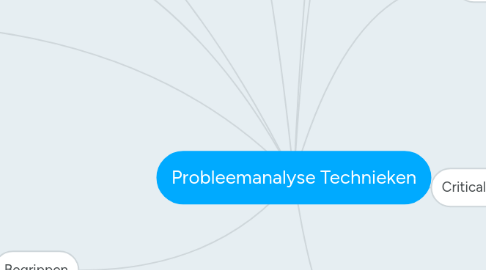Probleemanalyse Technieken
Door Robin van den Berg


1. Begrippen
1.1. Parameter
1.2. Norm,, tolereanties
1.3. Symptoom
1.4. Probleemstelling, diagnose
1.5. Probleem
1.6. Analyze
1.7. Gevolg
1.8. Oorzaak
1.9. Basis oorzaak
1.10. Noodoplossing
1.11. Oplossing
1.12. Symptoombestrijding
1.13. preventieve maatregelen
1.14. Faalmogelijkheid en effectenanalyse
2. Brainstormen
2.1. Alle ideeen belangrijk
2.2. Meer is beter
2.3. Geen kritiek
2.4. Voor borduren op andere ideeen
3. SIPOC schema
3.1. Supplier
3.2. input
3.3. Process
3.4. output
3.5. Costumer
4. VOC - Voice of Costumer
4.1. stakeholders
4.2. Customer needs mapping
4.3. VOB - Voice of Business
5. Kaizen Verbeteren
5.1. Kaikaku
5.2. Fundamenten
5.2.1. Groepswerk
5.2.2. Persoonlijke Disipline
5.2.3. Beter Moreel
5.2.4. Kwaliteitskringen
5.2.5. Suggesties voor verbetering
